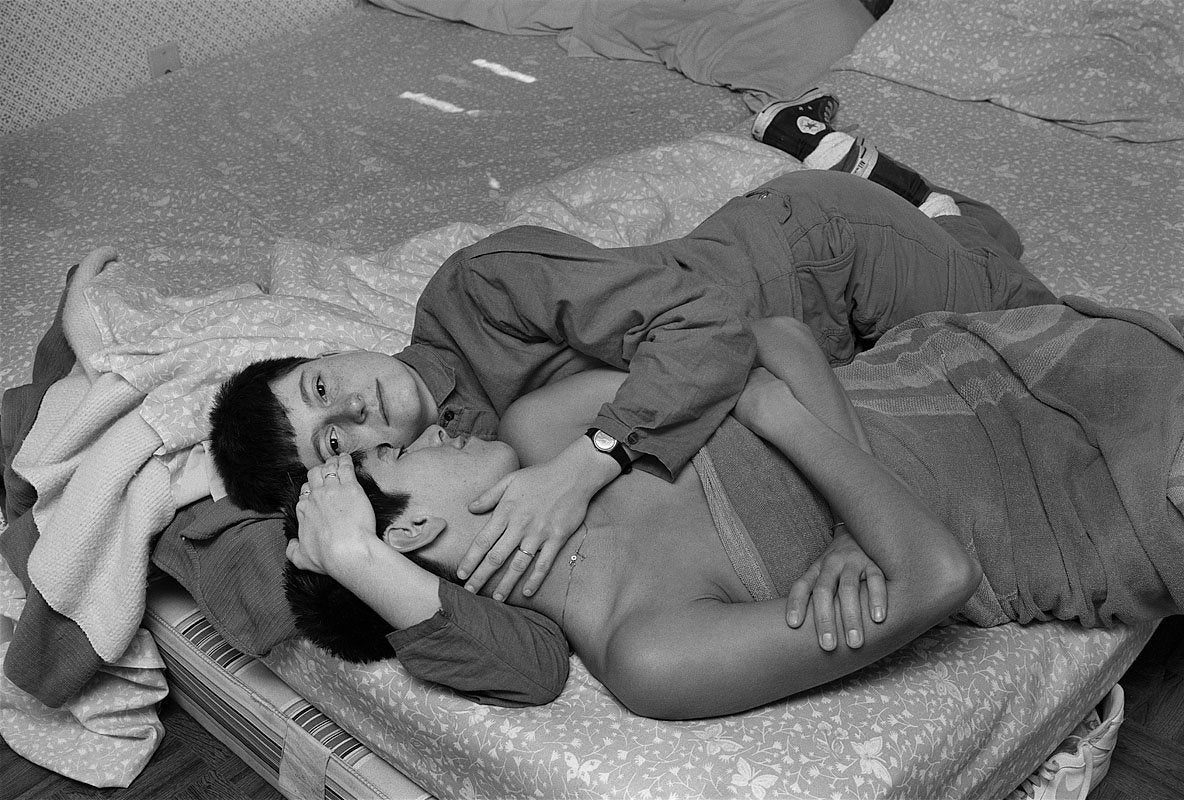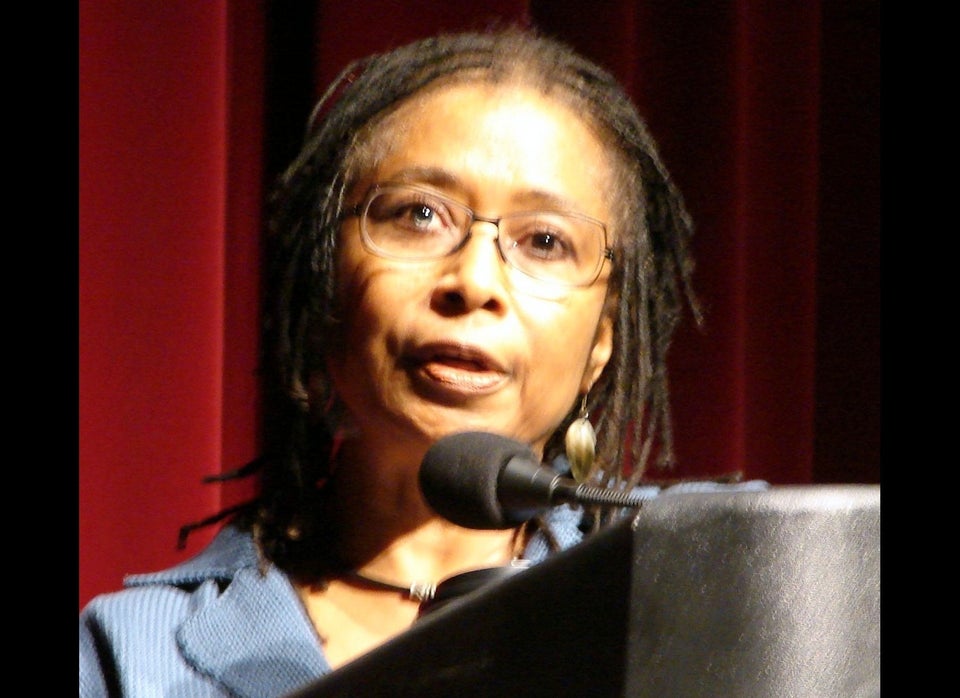The photograph above captures Chris and Cris, a 23-year-old college graduate and a 28-year-old freelance photographer, approximately six months into their relationship.
"All my relationships prior to this, I was the 'wife,'" Cris, on the left, explained in a caption that accompanied the image. "But the funny thing is that I’ve never wanted it that way, I’ve always wanted equality... It’s different for us in this relationship. It’s really based on equality in a big kind of a way, because we pretty much do things equally."
Photographer Sage Sohier captured the image in 1986, as part of her mission to chronicle long-term, same sex couples. Spurred in part by the AIDS crisis, Sohier was inspired to disperse images of gay couples that did not conform to the stereotypes of homosexual promiscuity proliferating through the press. She embarked on chronicling loving gay and lesbian couples of all ages, backgrounds and proclivities, capturing the variety and strength amongst relationships that often went unseen.
The project is titled "At Home with Themselves."
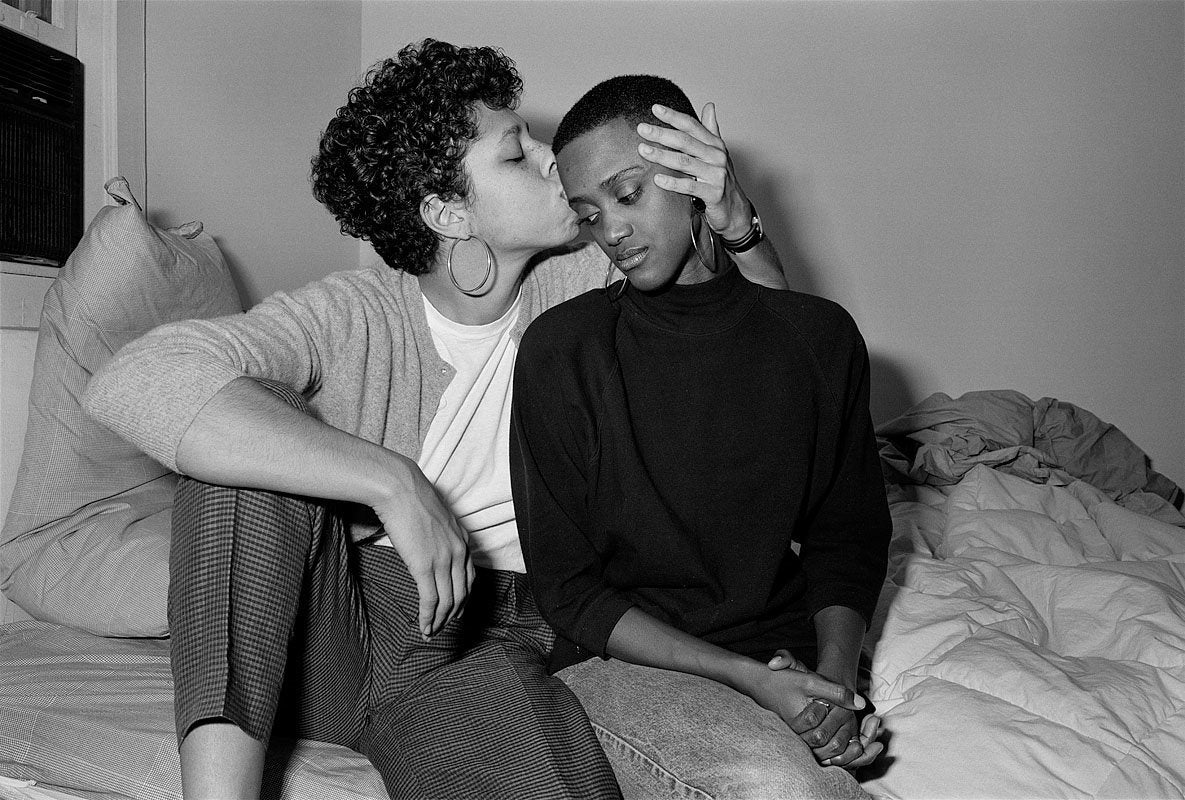
"I was interested in how, as a culture, we weren’t used to looking at two men touching," Sohier explained in a statement about the project, "and was struck by the visual novelty yet total ordinariness of these same-sex relationships. The visual ambiguity of same-sex relationships also intrigued me: were these sisters or friends or lovers or a mother and daughter?"
Sohier began her project by enlisting friends, and friends of friends, to serve as her subjects. After that, she began putting ads in gay newspapers and meeting couples at gay bars and protests. "It was the beginning of a turning point, and more and more gay and lesbian couples wanted to be seen, wanted their relationships to be recognized and valued."
"I see all of my photographs as collaborative, and these were no exception," Sohier explained to The Huffington Post. "I always ask permission, so there’s no way the pictures can be totally candid; people are aware of my presence and initially a bit self-conscious.
"However, since I spent three to four hours interviewing, talking to, and photographing couples, they would usually relax a bit as the session went on and it was then easier to capture more natural expressions and moments. If occasionally I wasn’t fast enough and I missed an interaction I liked, I might say, 'Can you do that again?' That doesn’t always work, but sometimes it does or something even more interesting emerges."

Along with the images, Sohier conducted extensive interviews with most of the couples she photographed. Some comments reaffirm the sentiments conveyed by a photo, others contrast them. The text and images are placed alongside each other in Sohier's book "At Home with Themselves," reflecting the fears, apprehensions and misconceptions of the 1980s.
The photographic endeavor was also prompted, in part, by Sohier's father, who was gay, although he never explicitly came out. The book is dedicated to him and his partner Lee.
Almost 30 years after she started her project, Sohier is moved by the different world represented in her work. "The work now has an added historical perspective that in some ways makes it even more interesting," she said. "It shows how profoundly things have changed for the gay and lesbian community in the U.S. Recently, these pictures were shown at the Myanmar Photo Festival and also in Krakow, Poland -- places where the concept of open gay relationships is still relatively new, and where the impact of the photos is closer to what it was in the U.S. in the 1980s."
See Sohier's photos and read excerpts from the love stories that accompanied them below:
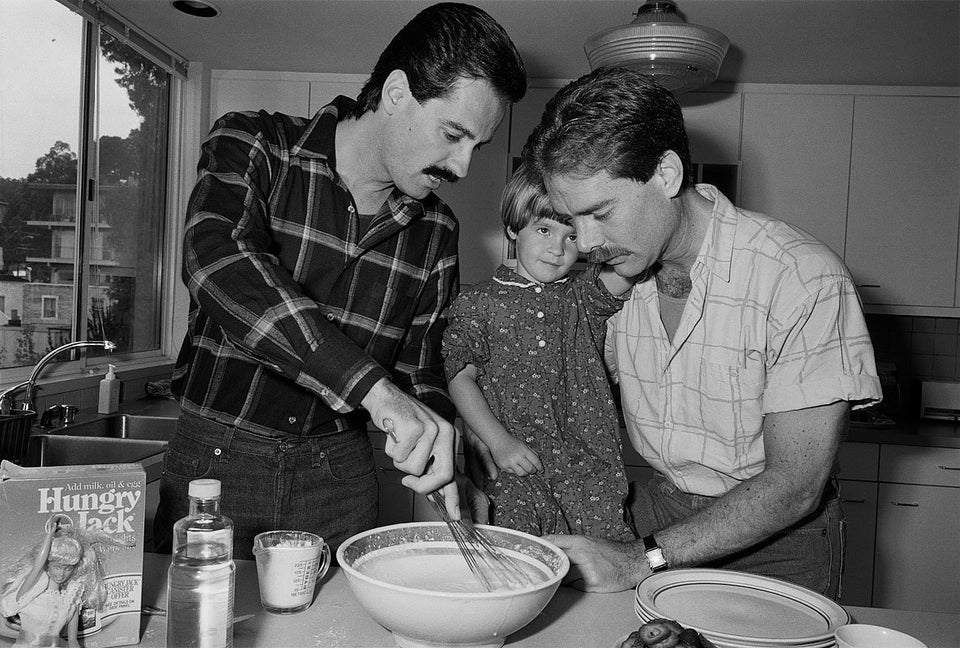
"...What will happen when [Kate is] seven or eight and all the stories in school are about Mom and Dad and the sort of stuff comes out about queers and about things being unnatural -- I think that’s going to be something that will pose a problem to her initially. How to incorporate what has seemed so familiar to her into a world where that is not familiar will be a challenge for her. But I think the fact that we ourselves are really very comfortable about it and very open about it, are not trying to hide anything from her or from anyone else, will make it easier for her." -Ric
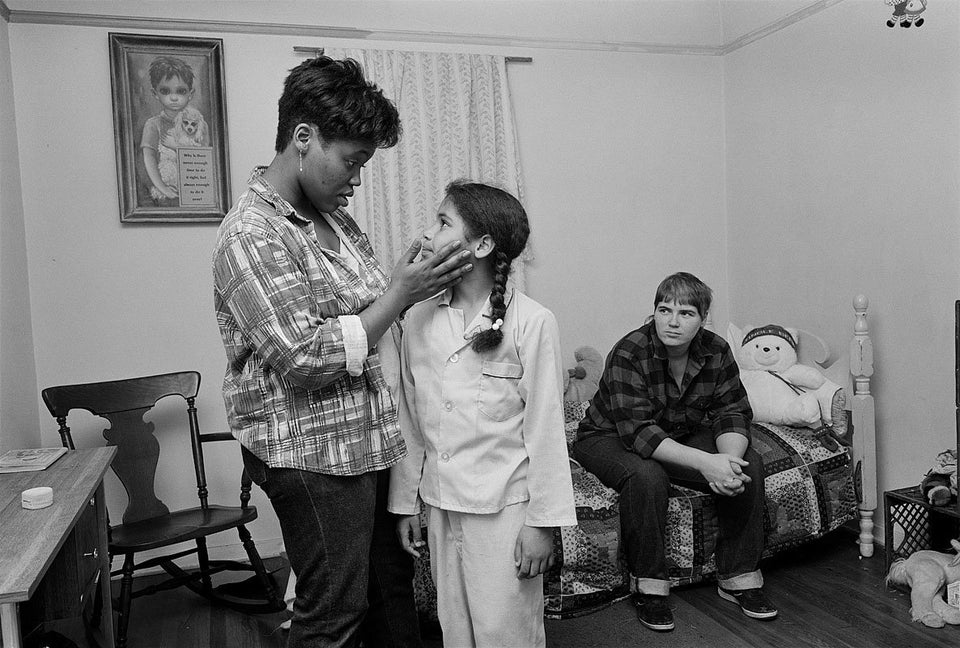
"I fell in love with Junyette before I fell in love with Doris. And when I fell in love with Doris -- when we were together, I felt like I was with her, and there wasn’t anybody else in the world. She appreciated me, she respected how I felt, she listened to me, she held me. She let me know that I was OK. As the years have gone by -- and it is quite a few actually -- I don’t see that as consistently as I used to, and I miss it. But Doris started that, and I never want to be without her, ever." -Debie
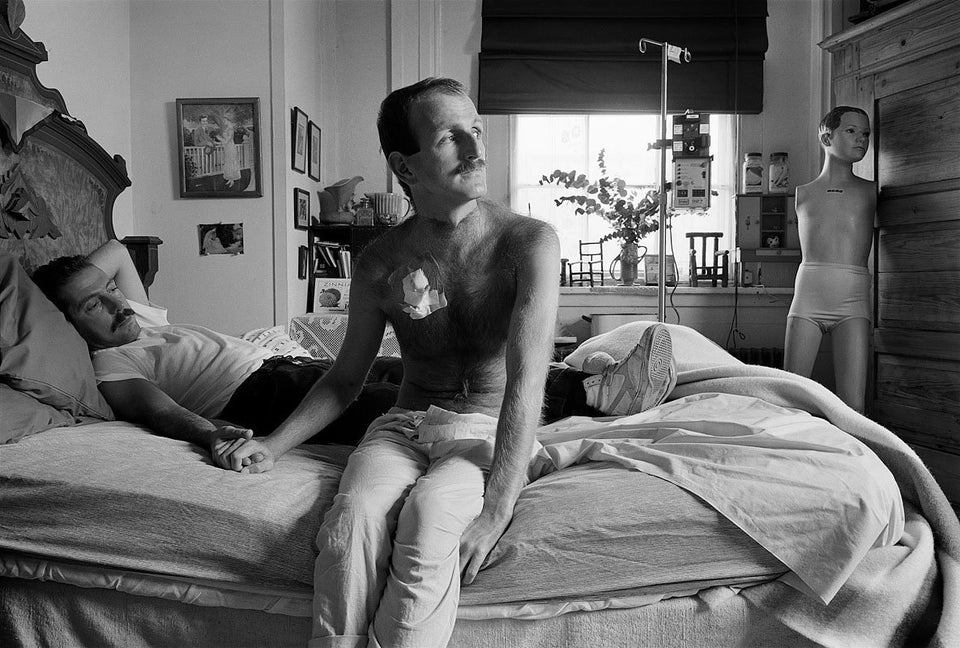
"I hated everyone when I found out Eric had AIDS, including Eric. I mean, I was angry at him for getting this disease. Why the fuck did he, you know, why? Angry at myself for being gay, angry for having those feelings of anger ... I’m waiting. To me this whole experience feels like what it must have been like to be Jewish and living in Germany in the '30s and '40s; you know, you hear about your friends being taken away and you just sit and hope that it doesn’t happen to you; but you wait and you wait for that knock on the door and you feel helpless; you know, people are dying all around me and I don’t know what to do." -David
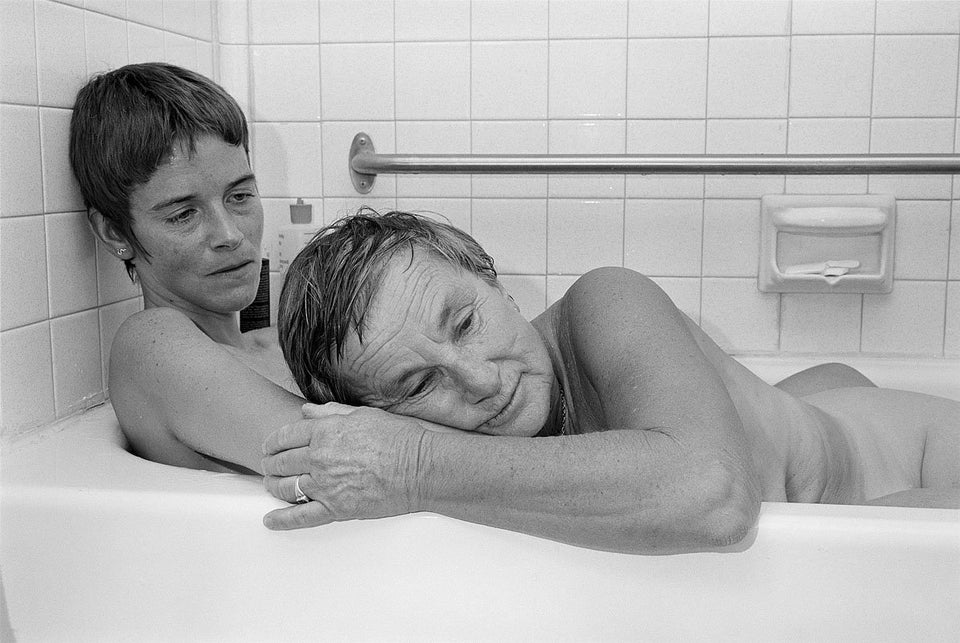
"I relate better to women older than myself. My first relationship with a woman [was] when I was 27, and she was 22 years older than I. Then I got involved with another woman a few years ago and there were 42 years difference. God, I mean, I’ve had to defend myself on this. You can’t imagine! I mean, I’ve had this reputation, 'Oh yeah, Jean who goes with older women.' There’s a quality there, I find, in older women that I don’t find in women my own age for the most part. They’ve pretty much gotten their lives together, and they know what they want and know what they are needing and looking for, and I’ve always felt way ahead of my time in terms of age." -Jean
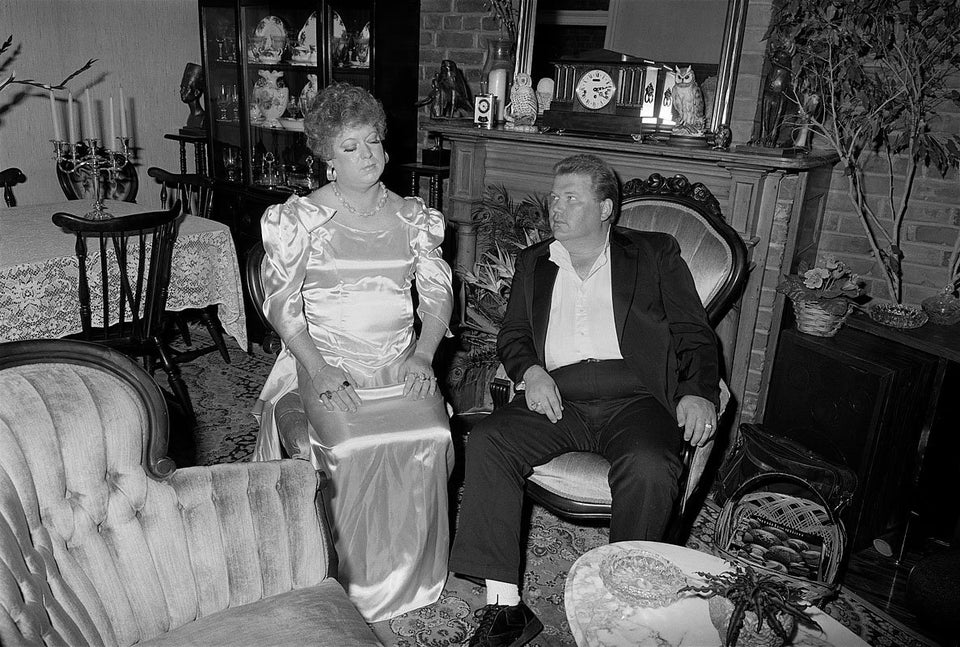
"I think that we’ve always passed as a straight couple. It’s been more comfortable for me. It meant a lot to me 14 years ago to be accepted as a normal person. All my life I’ve grown up believing that straight couples that were married, like my parents, were always going to be together. And that’s how I kind of classify us, because most of the gay couples that we know are nothing like our relationship. We’re kind of an odd couple in the gay community, I think, and people don’t understand why we love each other or why we are together." -Rip
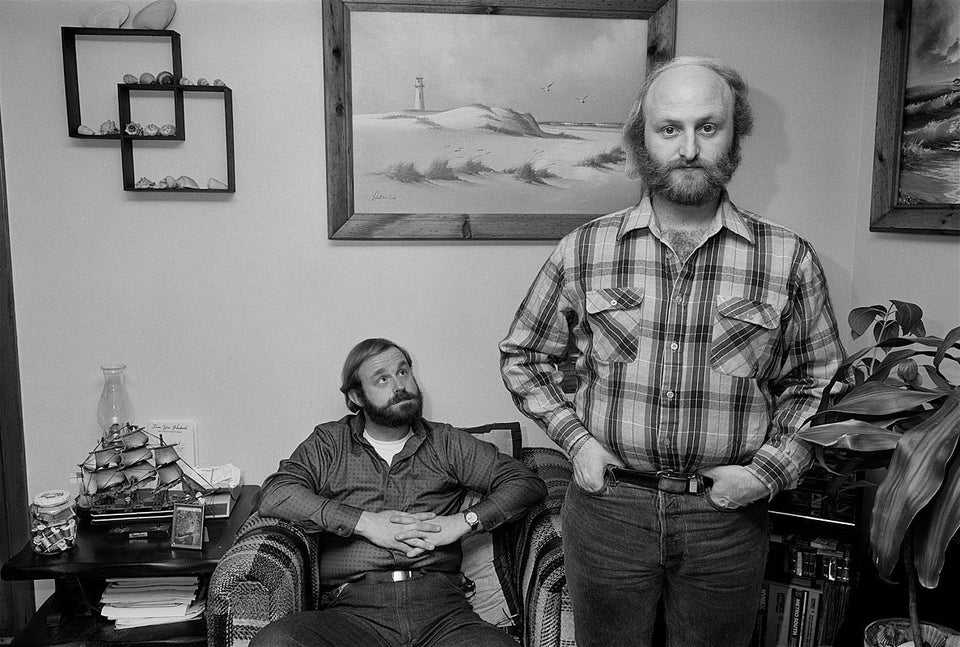
"My legs drew us together. When we met at the beach
I had these shorty-short shorts on. He said he liked my legs. I don’t know, there was just some type of a chemistry there." -Herb
"I wanted to be the other woman. I’ve always wanted to play that role." -Dana

"We’ve very much had to prove ourselves in the department as police officers. I finally made sergeant. She made sergeant before she had her problem. And I believe the reason she got fired for her problem was because she was gay. A lot of the men have done things far worse than what she did and are still working." -Linda
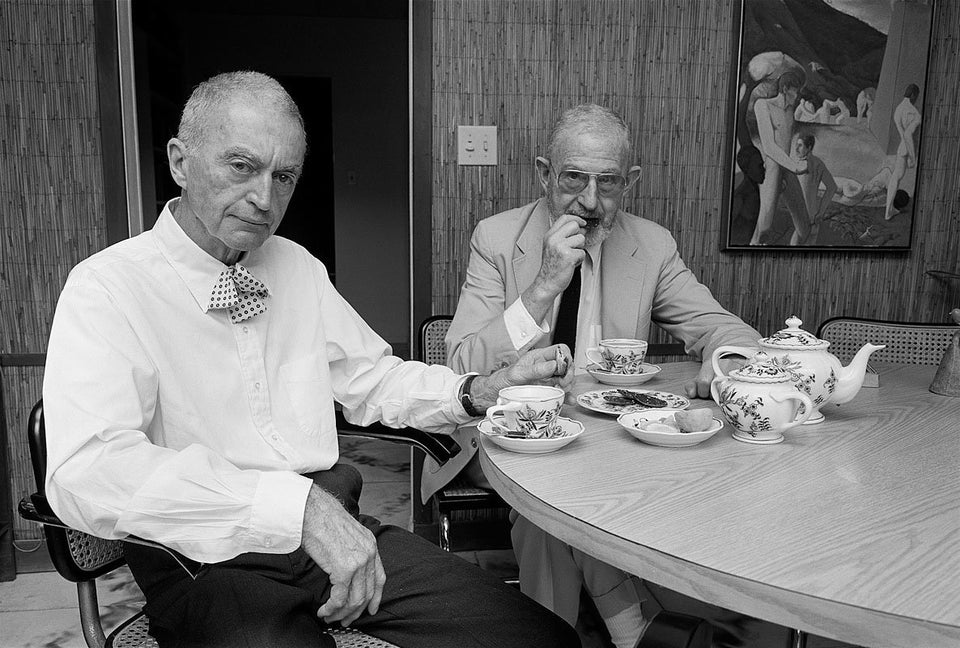
"I’m very old-fashioned, perhaps -- maybe Brian too. We’re of a different generation. People say to me, 'Oh, bring your lover!' and I don’t like to talk like that. [I say], 'My friend, Brian.' In business we say 'partner' and we are, you know, we’re friends. And when people say 'your lover,' that’s slightly shocking to me. On Sunday we wouldn’t wear jacket and tie at home, you know, but that’s what we wear during the week and that’s what we wear when we travel and that’s what we wear when we go out to a luncheon or a dinner party or a cocktail party in Key West, where we’re very often amongst the only ones dressed like that." -Hanns
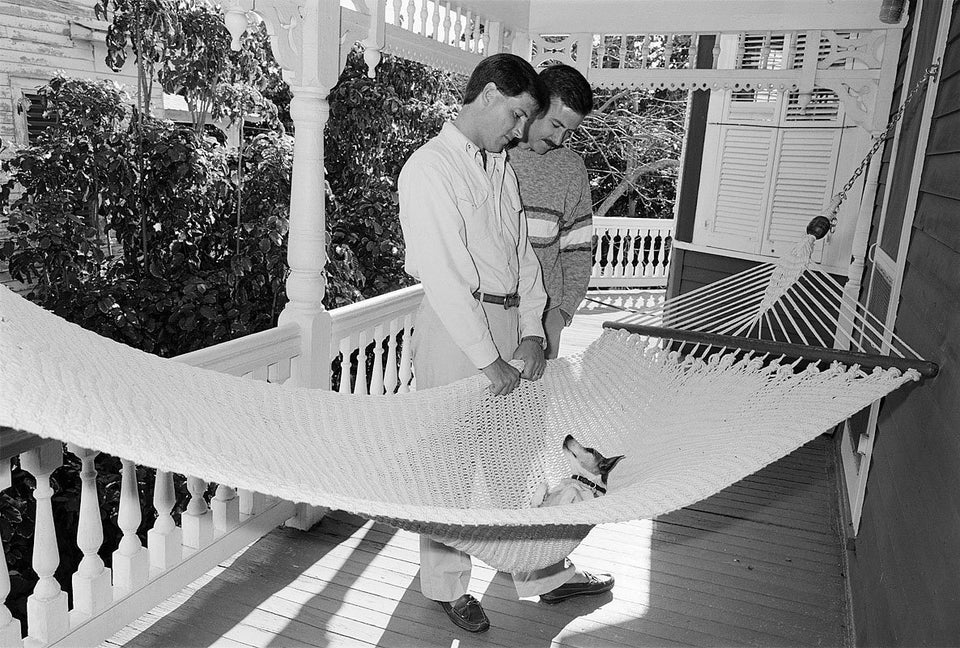
"We’re together virtually 24 hours a day, seven days a week. We work together and we do everything together. We share everything; it’s not like that book is his, that book over there is mine." -Alan
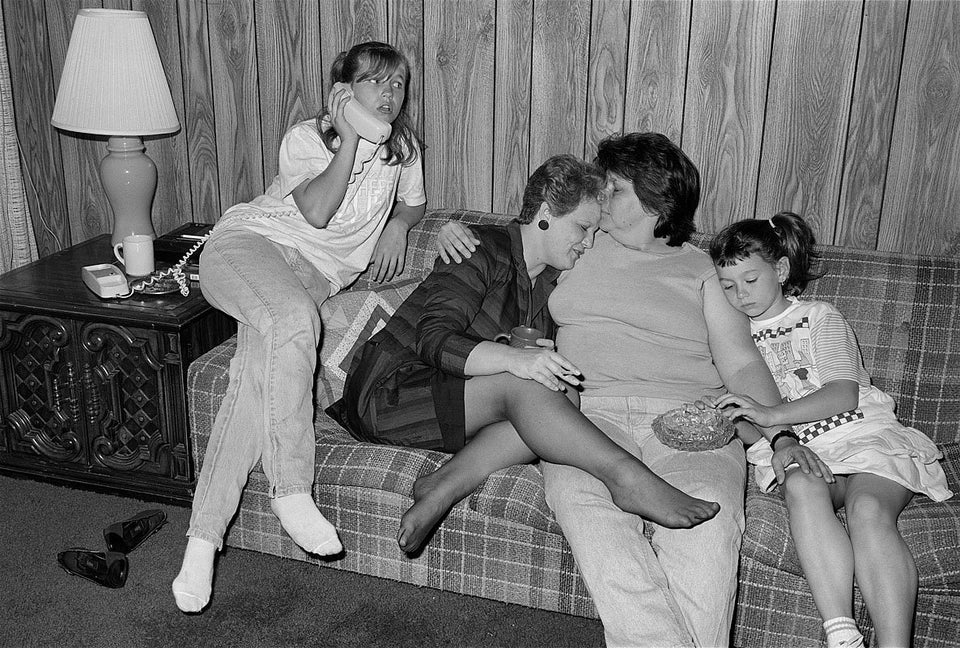
"If I put on a dress I feel like a drag queen. There’s nothing feminine about me. I’ve given birth 8 times, I’m a good mother, I love my children dearly -- I don’t want to be their father, I am their mother -- but dresses aren’t my thing, you know; makeup’s not my thing, even when I was married to my husband." -Diane
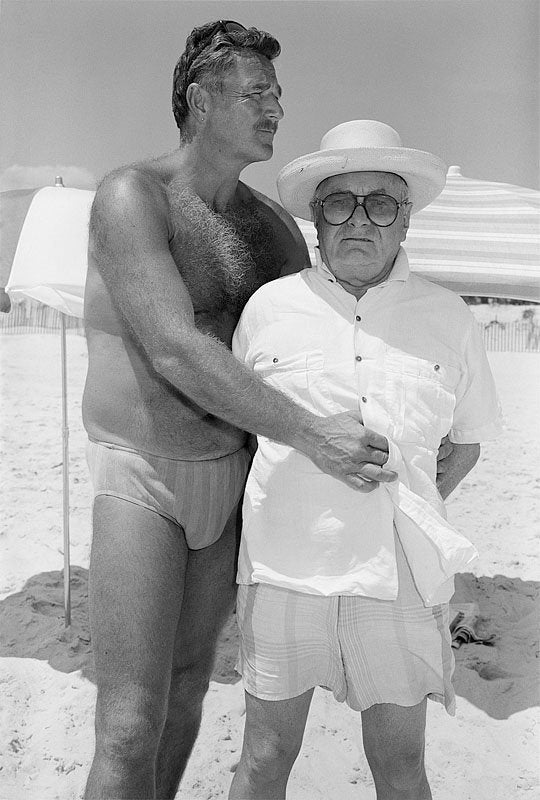
"What attracts me to Patrick? When I saw Patrick come into the bar it was magnetic. You know, it was truly a stranger across a crowded room, and we went to each other right away. And it was complicated at first, because he was involved and I was involved. Patrick actually rebuffed me for quite a while. I think what attracted me is that he looks a lot like my grandmother... and I loved my grandmother very dearly! But I seem to have a thing for short men." -Andrew
Also on HuffPost:
